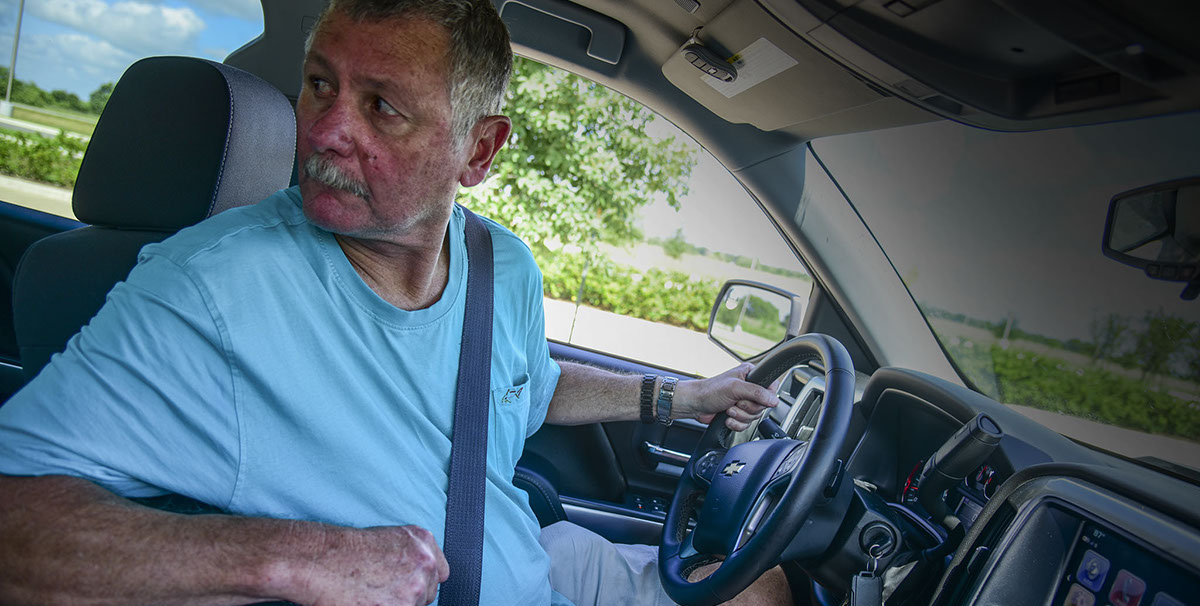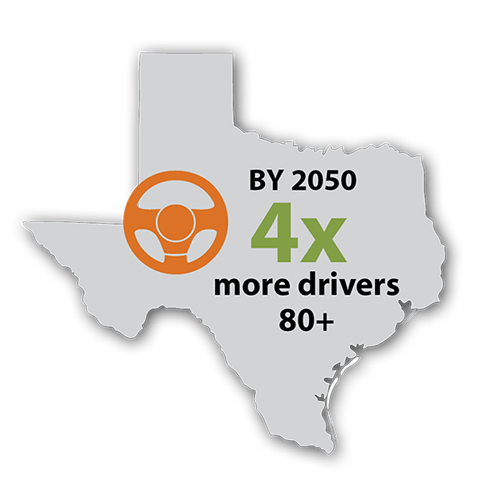
VOLUME 5, ISSUE 1
MENU



CTS Researchers Working to Make
Senior Drivers
There is a dramatic rise in fatalities among drivers 80 years of age and older. That age group is 1.2 times more likely to die than their slightly younger counterparts, drivers who are 75 to 79 years of age.
Safer

An analysis of older drivers in Texas leaves little doubt that, as we age, the greater our odds of being seriously injured or dying in a traffic crash.
Research conducted by the Texas A&M Transportation Institute's (TTI's) Center for Transportation Safety has found a dramatic rise in fatalities among drivers 80 years of age and older. That age group is 1.2 times more likely to die than their slightly younger counterparts, drivers who are 75 to 79 years of age.
“My parents are in their 80s, and my father still drives,” says Myunghoon Ko, a TTI associate research engineer in the Institute’s Crash Analytics Program. “What I’ve learned in this research is that it certainly can be dangerous to be that age and be on the road. I want my parents to enjoy their lives, and to be able to have that independence of getting in their car and going wherever they want to go, in a safe way.”
In a Texas Department of Transportation (TxDOT)-funded project — Traffic Safety Improvement of Senior Drivers in Texas — Ko and his research team conducted a literature review that found that both older and younger drivers had the highest crash rates among all driver age groups. They also found that senior drivers were often unaware of their functional limitations caused by medical and physical conditions that can slow reaction time and reduce mobility.
Some of the most helpful findings came from an exploratory, systematic analysis of crash data, which identified potential crash risk factors, and helped pinpoint situations where seniors were more likely to be in a crash. Analyzing the TxDOT Crash Records Information System (CRIS) data, researchers found that:
• Most senior crashes (75 percent) happen during daylight hours, compared to just 49 percent for non-senior drivers.
• Senior crashes were four times more likely to occur in urban areas than rural areas.
• Failure to yield was a much more common occurrence with senior drivers.
• Intersections were the most common roadway location for senior driver crashes.
“One of the more interesting findings from the analysis was that failures to yield right-of-way when turning left at intersections were a significant factor in senior crashes,” says TTI Assistant Research Scientist Amber Trueblood. “But you can imagine why that would happen as intersections have an increased probability for conflict, as they bring traffic going every direction together and are crowded requiring adequate reaction times — all could be elements that contribute to crashes at intersections.”
In the next part of the project, Ko and Trueblood were hoping to provide in-person educational activities with senior drivers. However, because of the COVID-19 pandemic, the team will instead be assembling education kits that will be distributed to senior centers in those counties across the state where senior crash rates are the highest.
“The kits will contain specially designed materials like crossword puzzles with tips designed to help older drivers be safer by avoiding crashes,” Trueblood says. “The kits will mention CarFit, a program designed to help make sure seniors are ‘fitted’ to their vehicle’s technology, and safety equipment like mirrors and seat adjustments.” The CarFit website lists upcoming events in Texas, and phone numbers for more information. | Check Out CarFit Online
As part of the next phase of the project, Ko is turning to technology in hopes of creating a safety tool for drivers like his father. “I am hoping to develop a ‘safe routes’ program for seniors,” he says. “I envision a resource designed for seniors that avoids dangerous scenarios to keep them safe on Texas roadways for as long as possible.”

